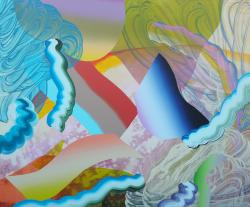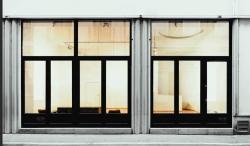November 18, 2025 - March 1, 2026
Orsolya Lia VETŐ, Annamária Rita TÓTH, Patrick TAYLER, Dávid SZENTGRÓTI, Éva SZAKÁL, Eszter SÖPTEI, Éva MAYER, Áron Zsolt MAJOROS, Krisztina MAJOR, Gabi LŐRINCZ V., Lili Hanna LŐRINCZ, Fruzsina KUN, Zsana KALÁCSKA, Tibor iSKI KOCSIS, Simon HOLPERT, Orsolya HACKER, Annamária GÁSPÁR, Tünde FÜLÖP, Lilla CSÉFALVAY, Marica BORBÁS-TÓTH, Linda BODOLÓCZKI
The latest exhibition at VILTIN @ Gallery MAX explores the most recent trends in contemporary color usage, while sensitively redefining the boundaries between fine arts and autonomous applied arts. Curated by Tibor iSKI KOCSIS, daydream C O L O R S_2 primarily aims to examine the reciprocal relationships between painting, sculptural, and applied arts practices. Abstract patterns and textures extend into the space, becoming tangible in their materiality, so that color acquires not only a visual but also, potentially, a touchable, physical presence. The selection thus draws attention not only to contemporary painting practices but also to experimental tendencies in autonomous applied arts, where materiality, surface, and structure hold equal aesthetic significance.
The transformation of contemporary color usage represents one of the most significant visual shifts of the past decades. Digital technology?particularly the screen- and display-dominated visual environment?has fundamentally altered the experience of color perception. In parallel, technical developments in acrylic paint production have enabled previously unimaginable color ranges and shades. The artists of daydream C O L O R S_2 work within these new aesthetic and technological conditions: their use of color is reflective yet intuitive, expressed through the language of post-digital visuality. The color practices of classical modernism -especially constructivism and the Bauhaus-were built on the aesthetics of order, harmony, and functionality. In contrast, the artists of daydream COLORS_2 embody the divergent, open-ended logic of 21st-century visual culture. For them, color is not a static compositional element but a continuously moving phenomenon, manifesting in space, material, and digital reflections alike. This approach aligns closely with the concept of post-digital aesthetics, which explores the tension between technological mediation and sensory experience. The exhibition, therefore, investigates not only the visual intensity of color but also its materiality.
In autonomous applied art forms - such as textiles and ceramics- the interaction of color and material becomes the structural and conceptual foundation of the artwork. In painting, a similar relationship emerges through the subtle interplay of surface and layering, characterized by transparencies and translucencies. The dialogue between these two artistic domains is thus not illustrative but conceptual: image, material, and space merge into a unified mode of visual thinking. In a broader sense, the exhibition documents the diversity and experimental spirit of color usage in contemporary Hungarian art. The works presented- whether in painterly or object-based media - explore new dimensions of visual perception, where color functions not only as an aesthetic quality but also as a conceptual tool.
daydream C O L O R S_2 reveals the layered nature of 21st-century visual culture, the interconnections between technology, visuality, and materiality, as well as the permeability between digital and tactile experiences. The VILTIN @ Gallery MAX exhibition thus represents not only a current aesthetic trend but also contributes to the discourse in contemporary art that understands color and material as fundamental interdisciplinary elements of visual thinking.




